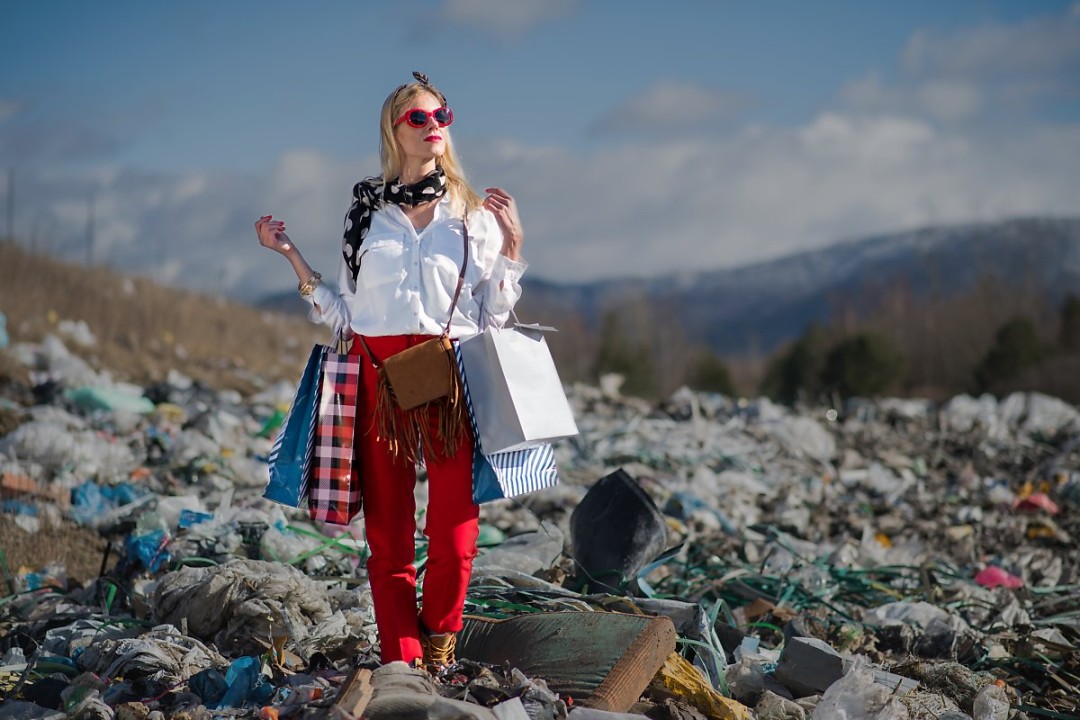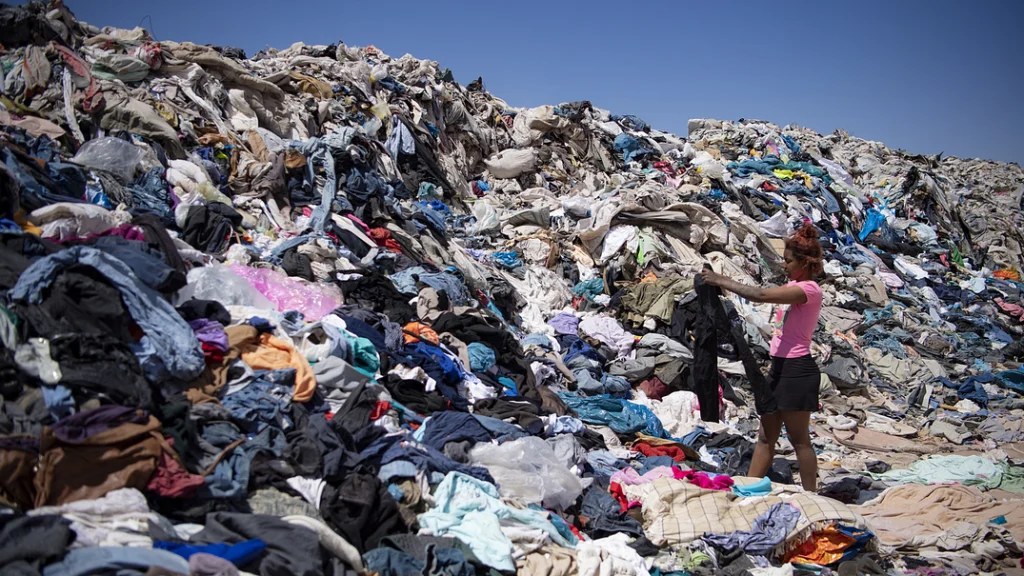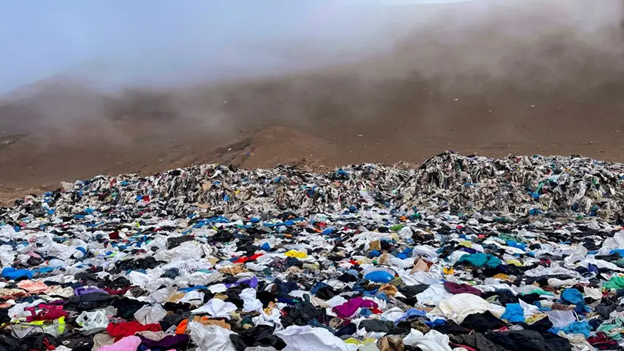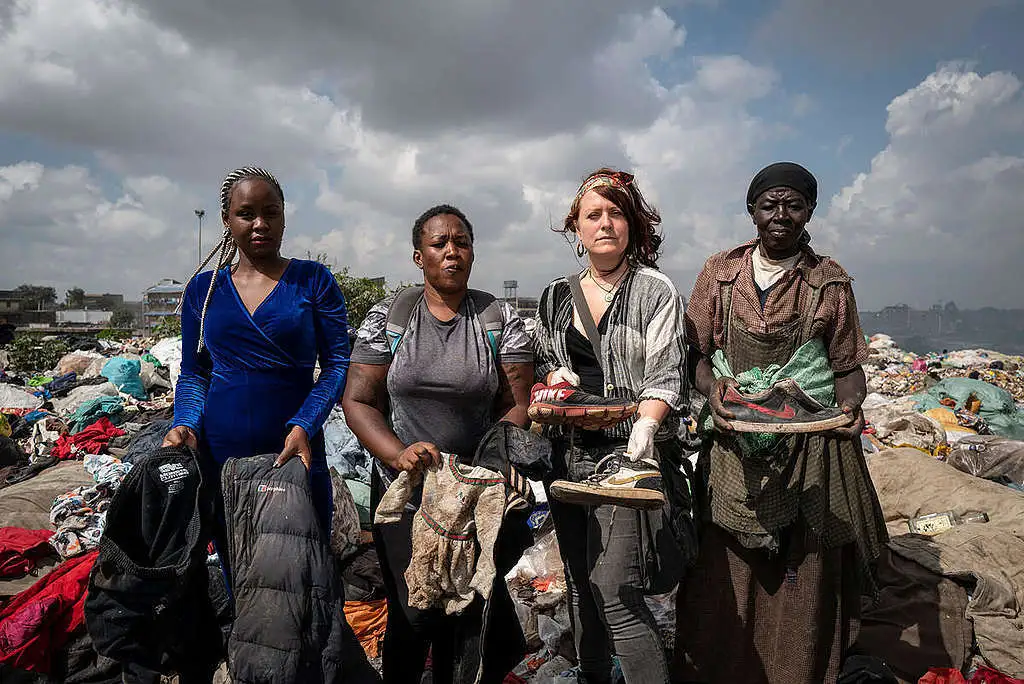Fast fashion refers to the rapid production of inexpensive clothing inspired by the latest trends seen on catwalks or celebrities. It involves quick turnover of designs and manufacturing, allowing for constant updates in stores to keep up with ever-changing consumer demands. Understanding its environmental impact is crucial because fast fashion contributes significantly to pollution and resource depletion.
By mass-producing garments at low costs, it encourages overconsumption and a throwaway culture, leading to immense textile waste that ends up in landfills. Additionally, the manufacturing processes often involve harmful chemicals and excessive water usage, contributing to pollution and ecosystem damage.
Recognizing the environmental consequences of fast fashion prompts us to rethink our consumption habits and support more sustainable practices. It encourages us to consider the lifecycle of our clothing, from production to disposal, and opt for eco-friendly alternatives.
Table of Contents
Environmental Impact of Fast Fashion
The environmental impact of fast fashion is profound and wide-ranging. One of the major consequences is water pollution. The production of textiles involves extensive water usage, from growing cotton to dyeing fabrics. Often, this water is contaminated with chemicals from dyeing processes, pesticides from cotton cultivation, and other pollutants, which are then discharged into rivers and oceans, harming aquatic ecosystems and endangering wildlife.
Chemical pollution is another significant issue. Many synthetic fabrics used in fast fashion, such as polyester and nylon, are derived from petrochemicals and release harmful substances during production and disposal. These chemicals can leach into soil and water, posing risks to human health and the environment. Additionally, the use of toxic dyes and finishes further exacerbates pollution problems, contaminating water sources and affecting nearby communities.
Textile waste is also a major concern. Fast fashion’s rapid production cycle encourages consumers to buy more clothing than they need, leading to excessive waste. Most of these garments end up in landfills, where they take decades or even centuries to decompose, releasing greenhouse gases in the process. The sheer volume of textile waste generated by the fast fashion industry contributes significantly to environmental degradation and climate change.
Examining Specific Environmental Consequences
Examining specific environmental consequences of fast fashion unveils a complex web of impacts. Water usage in cotton production, for instance, highlights how this thirsty crop contributes to water scarcity, particularly in regions already facing water stress. Chemical dyes used in fabric coloring not only pollute waterways but also pose health risks to both ecosystems and humans. Plastic microfibers shed from synthetic textiles during washing make their way into rivers and oceans, where they accumulate and harm marine life, eventually entering the food chain.
Furthermore, the disposal of fast fashion garments exacerbates landfill issues, as synthetic fibers take an incredibly long time to decompose. Landfills emit greenhouse gases as these textiles break down anaerobically, contributing to climate change. By dissecting these consequences, we uncover the urgency for systemic change in the fashion industry, urging stakeholders to adopt sustainable practices and innovative technologies to mitigate these environmental impacts.
Human and Social Impacts
The human and social impacts of fast fashion are equally significant and concerning. Exploitation of labor is prevalent throughout the fast fashion supply chain, with workers often subjected to low wages, long hours, and unsafe working conditions. Many garment workers, particularly in developing countries, endure exploitation and abuse, including forced labor and child labor, to meet the demands of fast fashion brands.
Moreover, the health risks for workers in the textile industry are substantial. Exposure to hazardous chemicals used in dyeing and finishing processes can lead to respiratory issues, skin diseases, and other serious health problems. Workers, especially those in poorly regulated factories, lack proper protective gear and training, putting their health and well-being at risk.
Additionally, the impact on local communities cannot be ignored. Fast fashion production often occurs in areas where environmental regulations are lax, leading to pollution of air, water, and soil. This pollution harms not only the environment but also the health and livelihoods of nearby residents, who suffer from increased rates of illness and reduced access to clean water and resources.
Overall, addressing the human and social impacts of fast fashion requires a concerted effort from both consumers and industry stakeholders to ensure fair labor practices, safe working conditions, and respect for human rights throughout the supply chain.
Solutions and Alternatives
Solutions and alternatives to mitigate the environmental and social impacts of fast fashion are imperative for a more sustainable future. Embracing sustainable fashion practices involves a shift towards ethical production methods and responsible consumption habits. This includes promoting transparency in the supply chain, ensuring fair wages and safe working conditions for garment workers, and reducing the use of harmful chemicals in textile production.
Consumer awareness and education play a crucial role in driving change. By understanding the environmental and social consequences of fast fashion, consumers can make more informed purchasing decisions and support brands that prioritize sustainability and ethical practices. This includes choosing quality over quantity, opting for timeless pieces, and investing in durable, eco-friendly clothing made from organic or recycled materials.
Policy changes and regulations are also necessary to hold fashion companies accountable for their impact on the environment and workers’ rights. Governments can implement stricter environmental and labor standards, enforce regulations on waste management and pollution control, and incentivize sustainable practices through tax breaks and subsidies.
Furthermore, transitioning to circular economy models offers a promising solution to reduce waste and promote resource efficiency in the fashion industry. This involves designing products with longevity in mind, implementing recycling and upcycling initiatives to extend the lifespan of clothing, and embracing innovative technologies for closed-loop production and textile recycling.
Conclusion
Fast fashion messes with our environment. It’s like a big pollution party with chemicals from making clothes, tons of waste clogging up landfills, and even water getting all dirty. And it’s not just nature that’s taking a hit. People suffer too like workers getting treated badly and communities getting sick from all the pollution.
But hey, there’s hope! We can change things up by spreading the word, pushing for better rules, and supporting brands that care about the planet and workers. Let’s get creative with our clothes, recycle more, and demand that fashion doesn’t come at the cost of our world or the people who make our clothes. Together, we can stitch up a fashion industry that’s not just trendy but also kind to the Earth and everyone on it.







